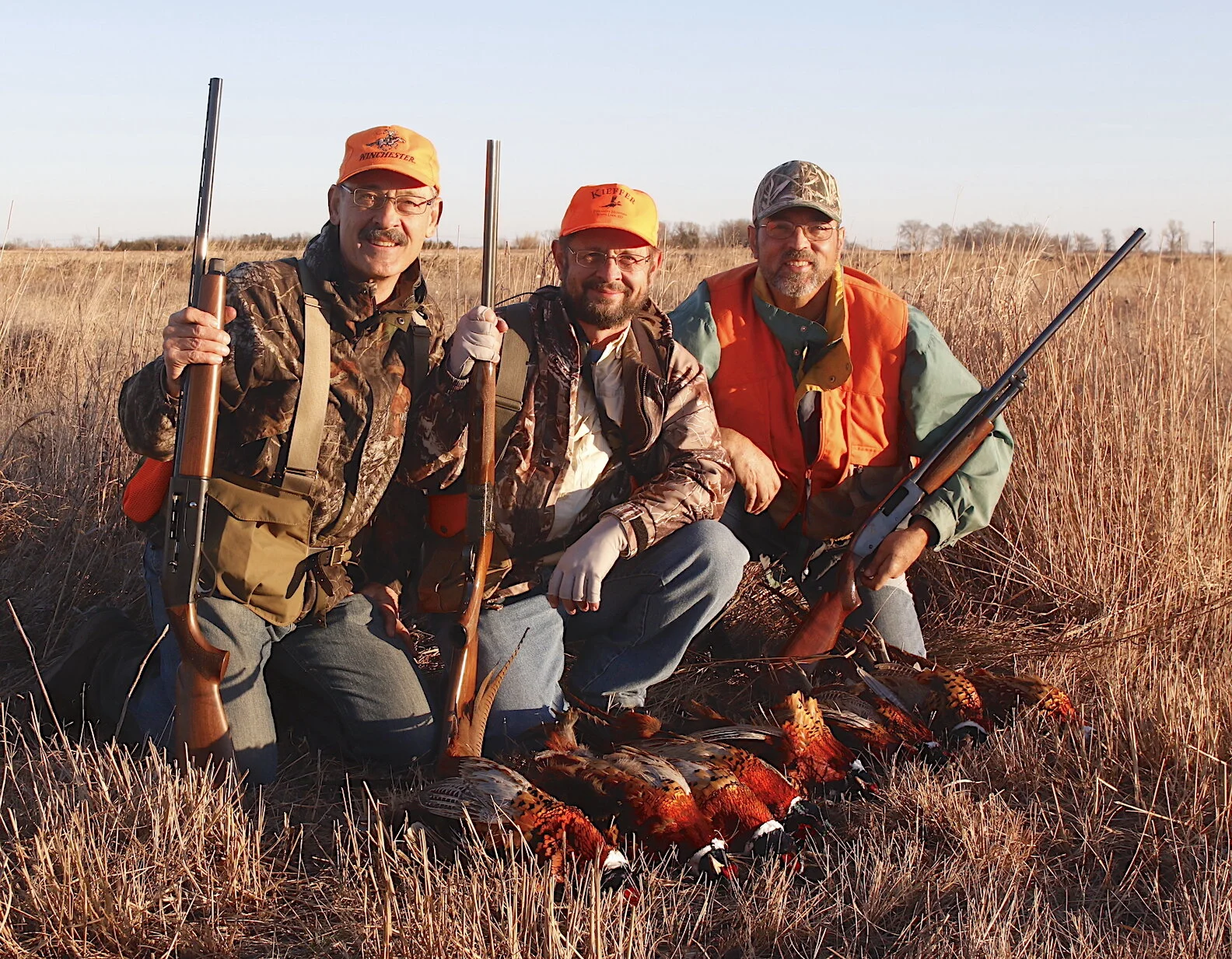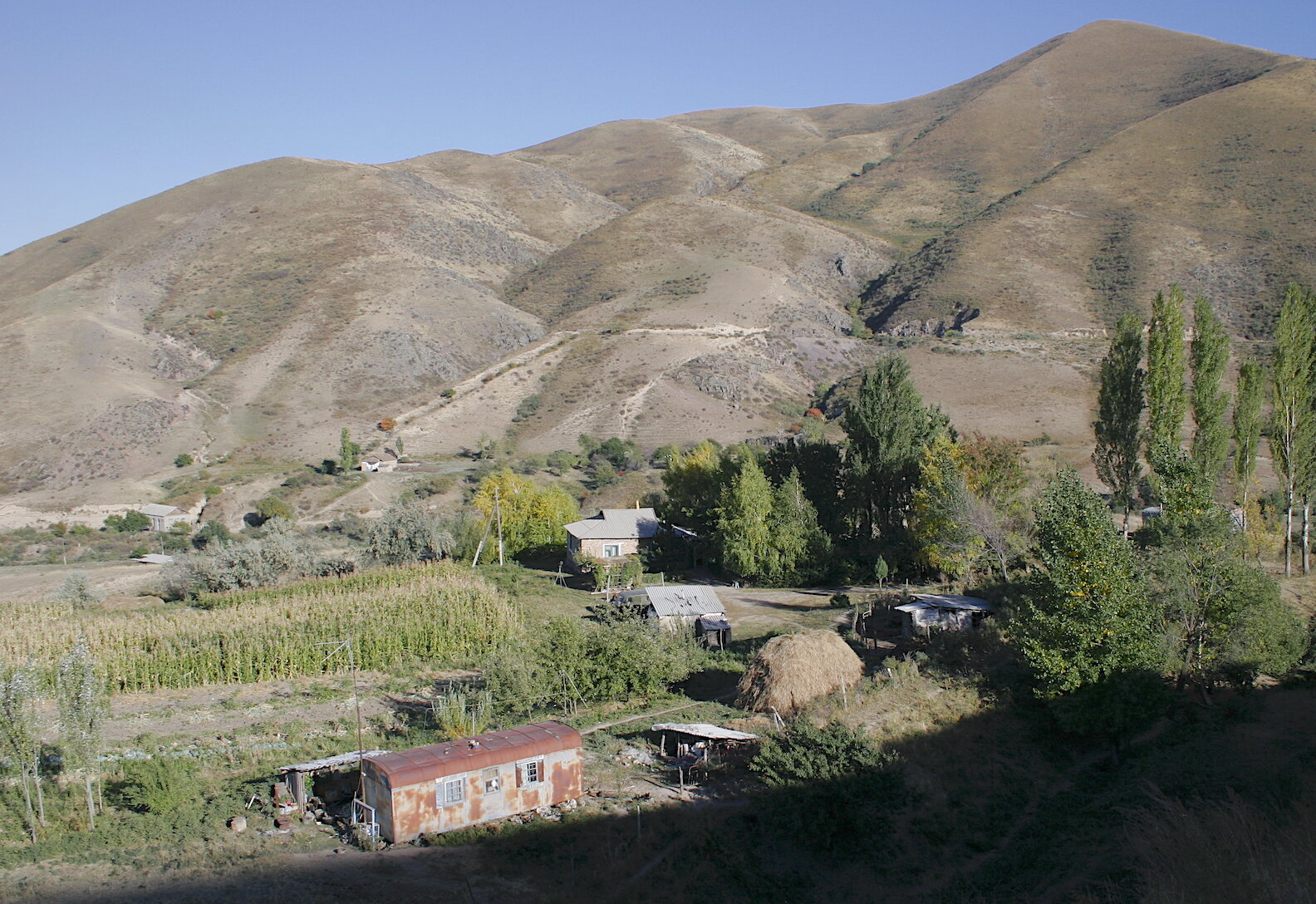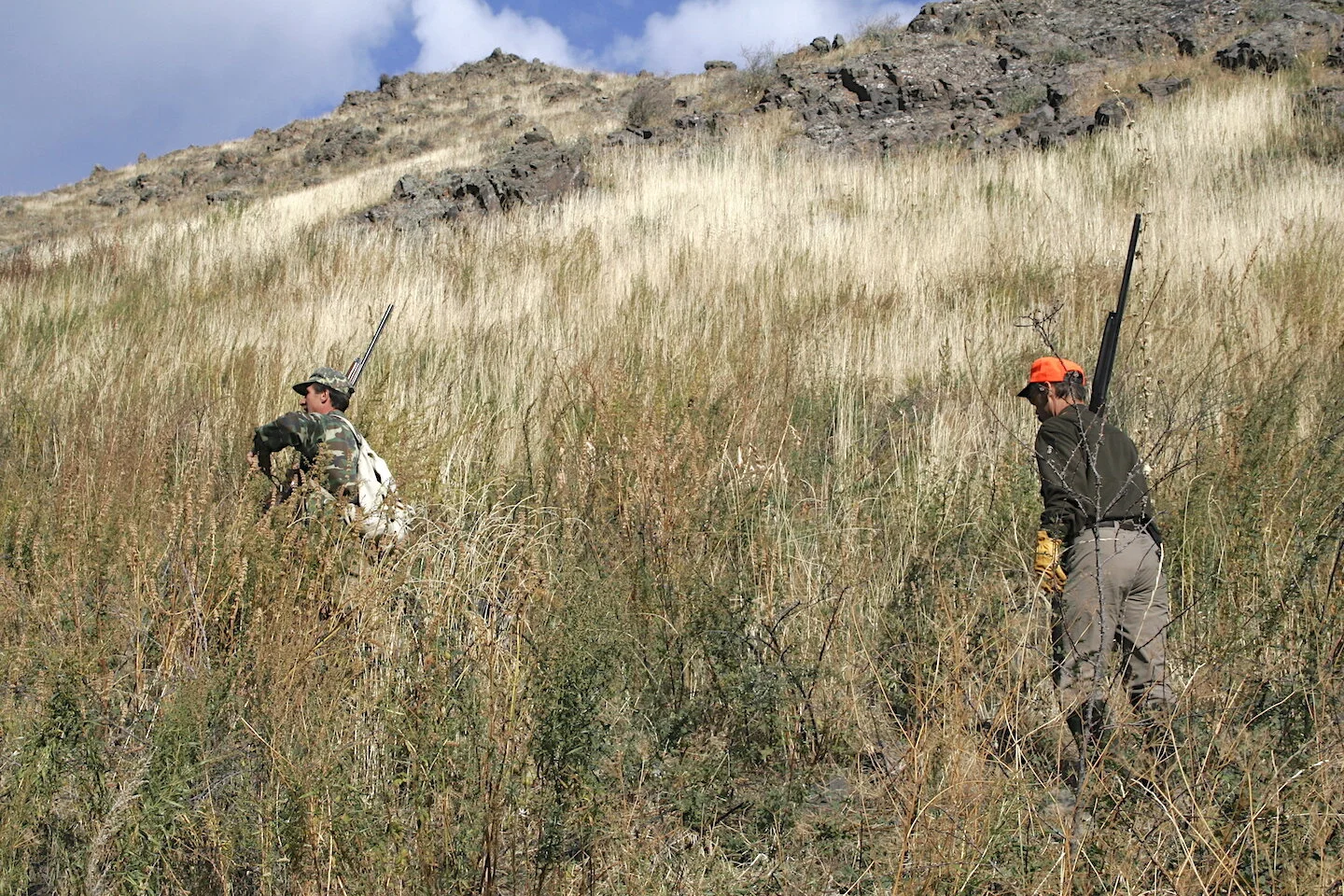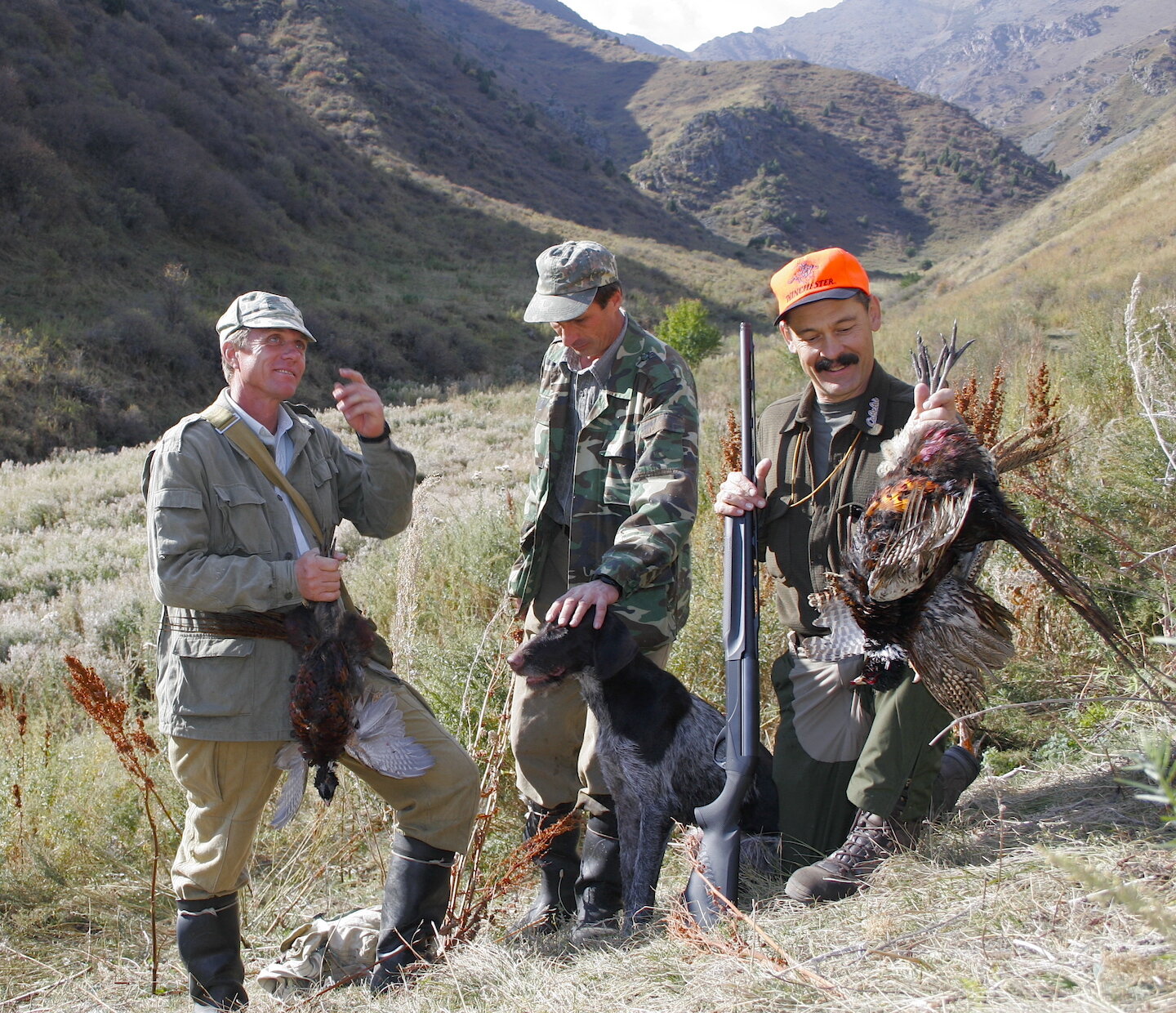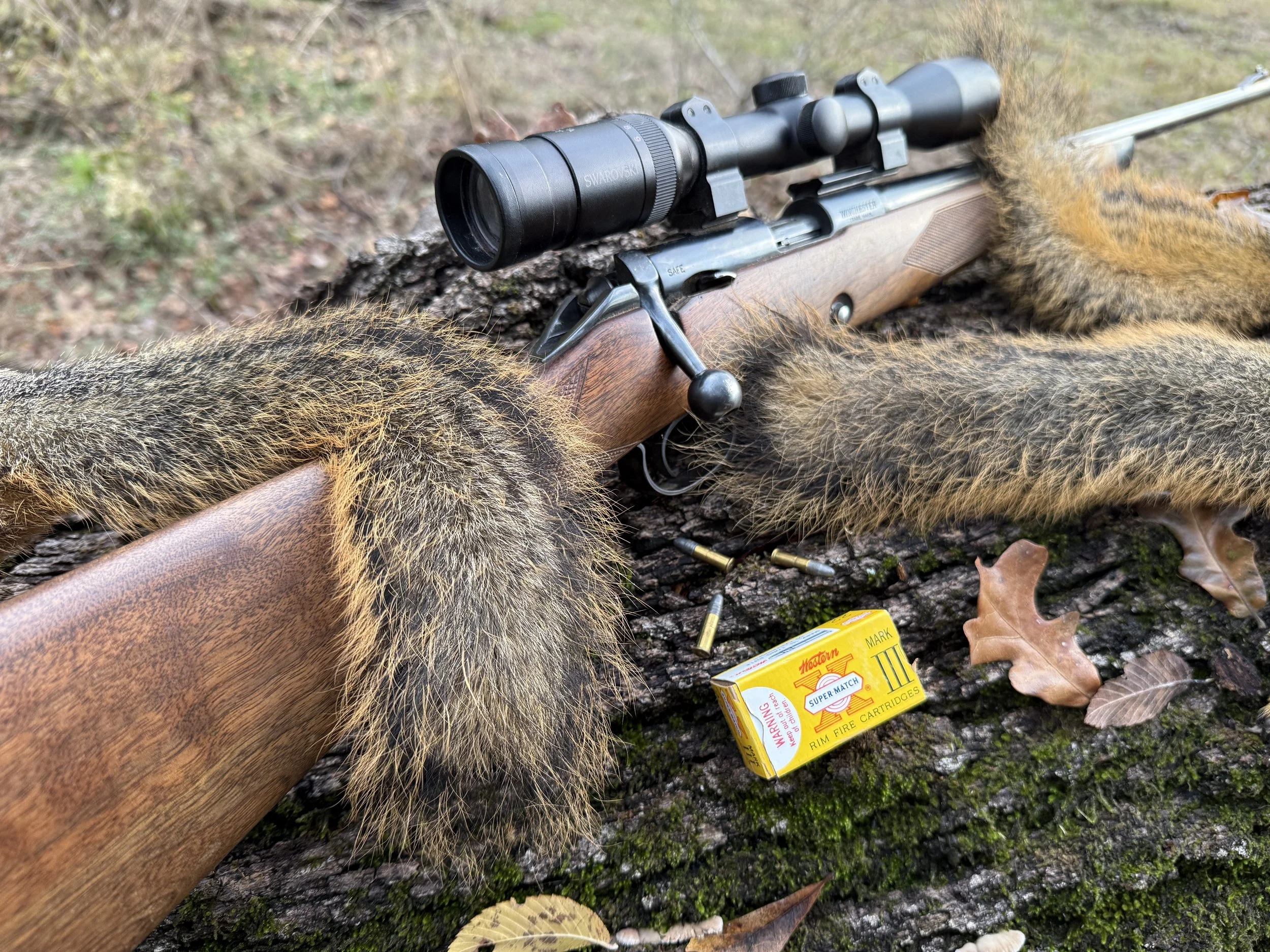World Class Pheasant Hunting
Ron Spomer, Bob Spomer, Brad Deffenbaugh celebrate another fantastic South Dakota pheasant hunt.
Summer is almost over, and that means pheasant season is right around the corner. I’m already looking forward to the crisp cool air, watching Covey hunt, and hopefully hitting my limit. I know I’m not the only one excited to find a few roosters because I recently received a question regarding South Dakota pheasant hunting from Joe. His question got me thinking about all the wonderful pheasant hunts I’ve been on in the great state of South Dakota and beyond. Here is what Joe asked -
Q: Good morning Ron. I’m hoping/planning/dreaming of driving to South Dakota this Fall with my four English Pointers to Upland Bird Hunt. I’m stoked about having the chance of getting into a possible variety of Ring-necks, Partridges, Sharp-tails, Prairie Chickens & Bobwhite Quail. Can you give me any insight? I’m initially attracted to the Winner area. Sounds like there may be 2-3 others going with me & maybe be another pointer or two. I’d envision alternating dogs between 3-4 hour hunts (as if we’ll last that long). I’m hoping to find a cabin-type accommodation to rent for 4-5 nights, w/ a hot shower, kitchen, stove, restroom, heat & that would welcome outside dogs. We’re not needing the $550 a day per hunter outfitter...but public land DIY hunting would be great. If you have any suggestions, I’d really appreciate it ...or if you’d like to go... that’d be even better! If you recommend a particular week or two on the calendar to go, that’d be great too! I can’t think of a single person I’d rather bounce this off of than you. You go ahead & bring me back down to reality...I can (hopefully) handle it.
A: Hey Joe!
You're not too far from reality. I've hunted this way for decades. Public land can produce and there are thousands of areas. SDF&G Atlas shows the way. Suggest you contact city chambers of commerce or SD tourism for lists of cabins, motels, etc. Most welcome dogs and hunters, often providing cleaning stations, freezer space, etc. They depend on hunters for much annual income. Winner area is excellent for mix of Pheas, Sharptails, Prairie Chickens and a few Huns, but it's too popular. Hunting pressure is intense. Lodges and preserves and guides everywhere. And perhaps not quite as much un-hunted public areas as in other parts of the state. Get on the F&G website and check relative bird densities in other areas compared to hunter densities. I usually hunt a relatively poor area that hasn't as many pheasants as Winner/Chamberlain and similar hotspots, but also has many fewer hunters. Usually limit every time, but also have access to some private lands which can make a huge difference when public lands are pushed out. The birds concentrate where no one disturbs them. I've umped as many as 15 roosters at a time a few hundred yards on the private side of a fence surrounding a public area. Now, these birds will move daily to food, so it pays to assess escape cover related to forage. About 3 or 4 PM the birds will sneak to the forage field. Hunt the edges of grass/grain then. Even on heavily hunted public areas, this can work. Also try "surrounding" big fields. Birds will move away from hunters, so start 3 or 4 guys/parties from 4 directions toward the middle. Running birds bump into someone. Watch your shots! Hunt smart and you can limit the miles. They do add up quicker -- or maybe they're longer and uphill both ways these days! Last year Brad and I struggled for a three days, sometimes getting but one or two birds, but on the last day we'd figured them out and limited easily with the dogs pointing bird after bird after bird. It was a red letter day! Hope you have similar success. Do that research! Good luck.
South Dakota is the Pheasant Capital of the World. World class pheasant hunting is truly South Dakot’s claim to fame. That’s not just PR hype. It’s true. Have you ever heard of anyone going to China to hunt ringnecked pheasants? Given the sheer numbers of people in that overcrowded land, native pheasants are probably an endangered species. Even if they aren’t, I doubt citizens are allowed to own shotguns with which to hunt. But China isn’t the only Asian country with native pheasants.
Finding Pheasants in Native Lands
Several years ago I learned that Kyrgyzstan harbored naturally reproducing, wild pheasants that could be hunted. Since my wife and I were going there to hunt ibex anyway, I insisted on searching for pheasants. We found them. The Republic of Kyrgyz is a former Soviet satellite that regained autonomy after the Soviet collapse. It lies along Marco Polo’s famous Silk Road hard against the China border in the tall, snow-capped Tian Shan mountains where huge Argali sheep and ibex roam. I imagined pheasants would be found in stream-side brush, fence line weeds and similar cover bordering corn fields in the flat valley near Bishkek, the capital city. I imagined incorrectly. They were in the mountain foothills.
We found native pheasants near this Kyrgyzstan mountain farm. Notice the cornfield. We imported Asian pheasants. They imported American corn.
Remember the 1970s clean farming that nearly wiped out U.S. pheasants? It was alive and unwell in Kyrgyzstan. Once fields are harvested, local folk hand-pick the leftovers. Anything they can’t eat they feed to their livestock. Milk cows are staked in front yards and along highway edges. Goats and sheep are herded through any residual cover. So where are the pheasants? Hanging on in weedy foothill valleys above that intensive agriculture and dense human population, but below the snowy peaks. These valleys are narrow and bordered by steep, grassy slopes full of chukars. North-facing slopes are choked with short brush, especially a thorny, wild rose that makes climbing painful. Snowmelt streams irrigate tall, dense weeds in the valley bottoms.
The Kyrgyzstan mountains were choked with enough weeds and brush to make good pheasant habitat, but the steep, rocky ground made for difficult walking — not something you find in South Dakota.
A World Class Pheasant Hunt in Kyrgyzstan Mountains
We hunted with two wonderful Russian guides, Pavel and Viktor, and one visiting Romanian, Sergei, and his German wirehair pointer (Drathaar), Deya, which obeyed commands but didn’t seem to smell birds all that well. She pushed pushed several from tall grass and shrubs part way up one slope, all but one hen out of range. I shot that hen, since it was legal. It looked about like a Dakota hen but with slightly larger feather markings.
Pursuing roosters up the slopes proved good exercise, so we dropped to the heavy weeds along the creek, hoping for some shooting. What Deya lacked in efficiency she made up for in determination, worming back and forth through the weeds until she’d put up three roosters, two of which Betsy and I tumbled. Those roosters resembled Dakota ringnecks except their tail feathers seemed more reddish and their rump feathers were a uniform, dark, green iridescence instead of the multi-colored baby blues, olives and greens our birds show.
Guides Viktor, Sergei, and his dog Deya helped Ron find native Afghan pheasants in the weedy canyons of the Tian Shan mountain range in Kyrgyzstan. Wonderful folks and great country, but the hunting cannot match that of South Dakota, still the Pheasant Hunting Capitol of the World.
It turned out you had to belong to a hunting club or association in order to hunt in Kyrgyzstan, and then you could only hunt the area assigned to your club. Viktor was a full-time hunting guide in season, sort of a game warden/biologist the remainder of the year. Foreigners were allowed to begin hunting Kyrgyzstan in 1995, but Betsy and I were only the 2nd and 3rd American’s Viktor had ever guided. We stayed in an old brick farmhouse at the base of the mountains. There was electricity but no running water. A spring filled a tank in the sauna where we could get a hot bath. Viktor’s charming 20-year old daughter cooked for us. To circumvent the language barrier, the Kyrgyz Hunters Association assigned us a full-time interpreter, a delightful 22-year old woman named Asyl who spoke better American-style English than most American kids. She’d been a high school exchange student here and hoped to return to finish a college degree. What an ambassador for Kyrgyzstan this gal was!
Our guide Viktor and his daughter, our camp cook. What fine, friendly hosts!
South Dakota Remains 1st for World Class Pheasant Hunting
Much though we enjoyed our Kyrgyzstan adventure, we still think South Dakota is #1 for world class pheasant hunting. Why? Because there are pheasants in greater numbers at higher densities, limits are more generous, the habitat and terrain are easier to hunt, the accommodations are better and more varied, you don’t need complicated gun permits to get into the State, you don’t have to fly 14 hours to reach it, you can bring your own dog, you can take your birds home, and everyone speaks English!
In the hunting van with our delightful, informative interpreter, Asyl, who added immeasurably to our enjoyment of Kyrgyzstan.
I was going to add that South Dakotans are the friendliest, most helpful hosts a hunter could ever hope to meet, but our Kyrgyz hosts matched that. The heartfelt toasts and honors they presented at our last dinner were wonderful. I felt so comfortable with them that one night I joked that I had grown up fearing I’d be hunted BY Russians, and instead I was hunting WITH Russians. We all laughed. Then they replied that they’d grown up fearing they’d be hunted by us, the big, bad, evil Americans -- and there Betsy and I stood with guns. We laughed some more.
Betsy and I hope to return to Kyrgyzstan to visit our new friends, see some more dramatic landscapes, tour more of the Silk Road, and hunt pheasants, chukars, ibex and perhaps even those big Marco Polo rams. But when we want to enjoy the finest pheasant hunting in the world, we’ll stick with South Dakota.
Betsy and I on our drive to the Kyrgyzstan pheasant hunt. This wasn’t last fall, folks!


